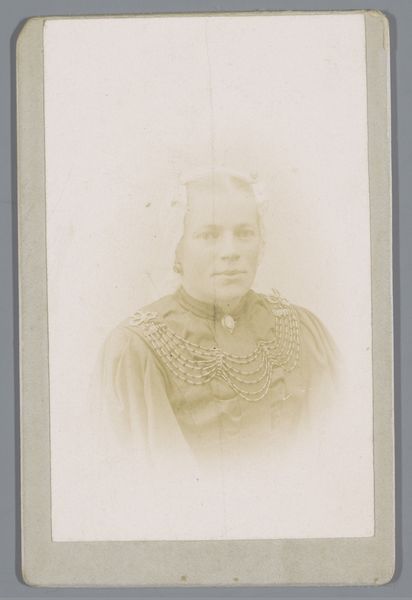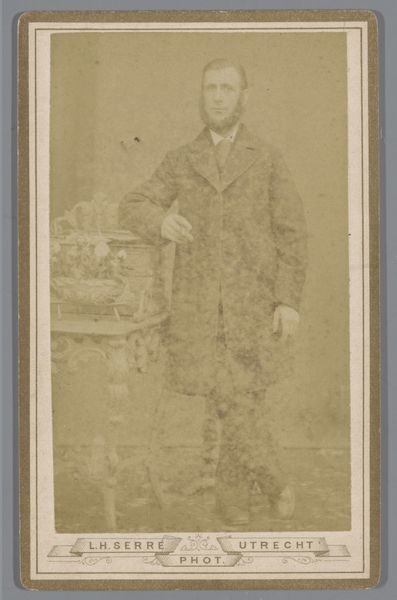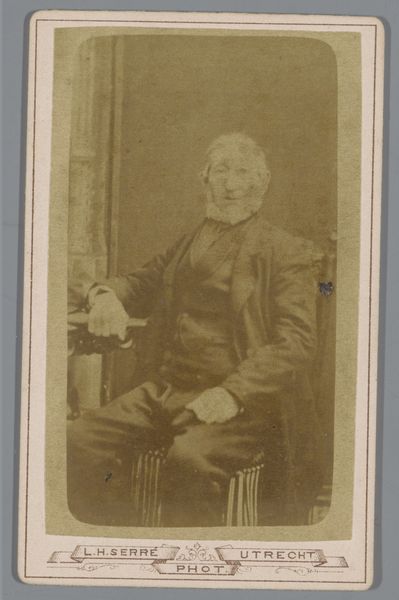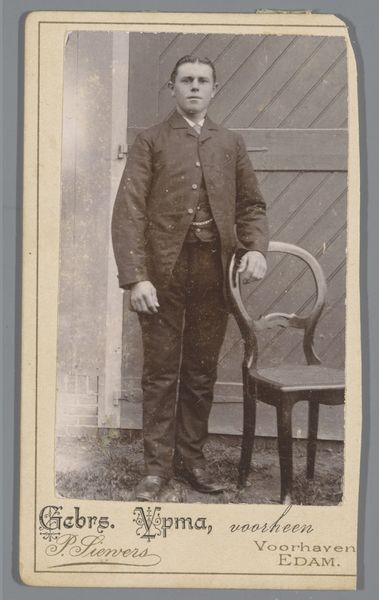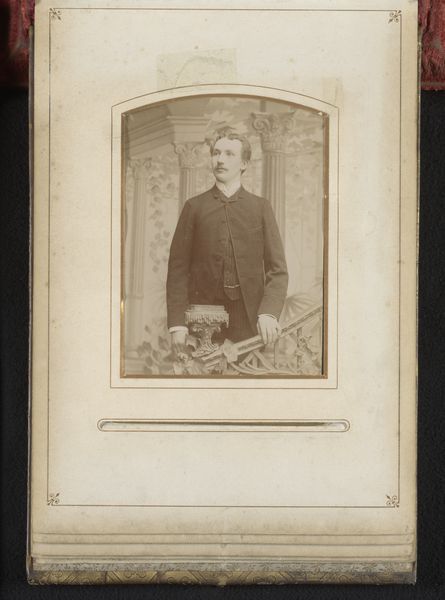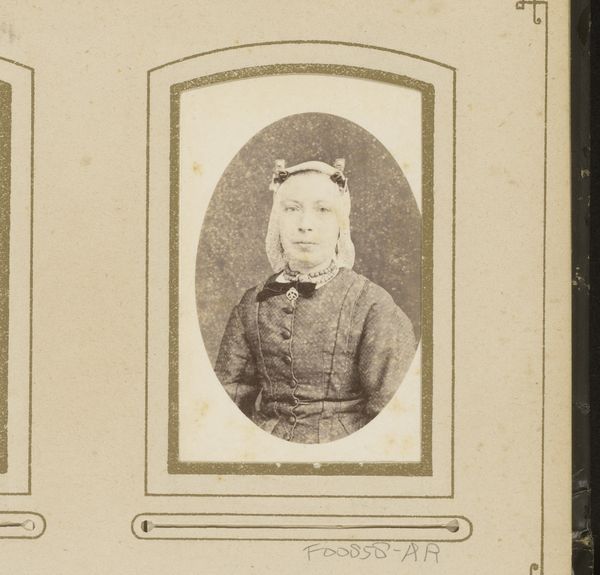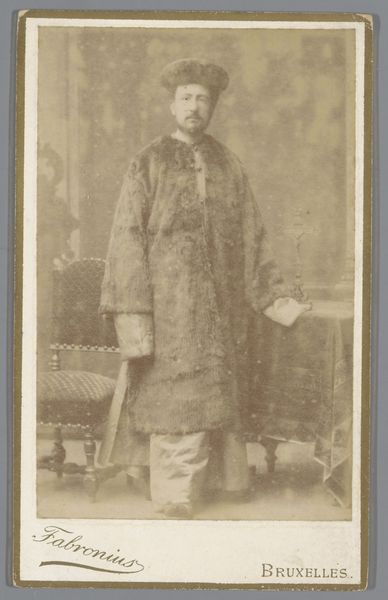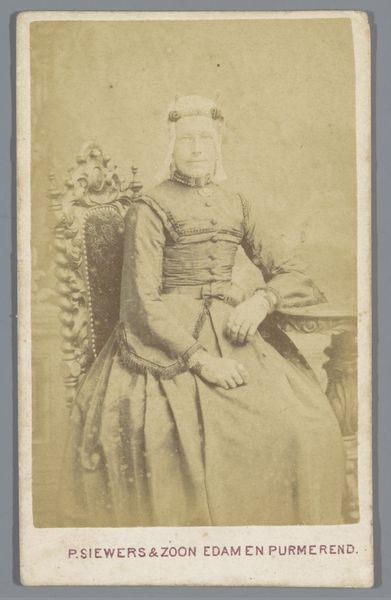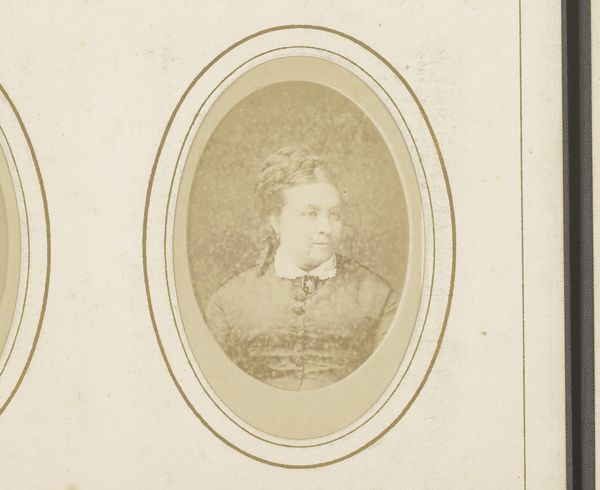
photography
#
portrait
#
aged paper
#
toned paper
#
homemade paper
#
photography
#
watercolor
#
realism
Dimensions: height 104 mm, width 65 mm
Copyright: Rijks Museum: Open Domain
Curator: I find myself drawn to the melancholic quality of this image. There's a sense of faded memory, a quiet introspection that permeates the entire composition. Editor: You've zeroed in on the core of what this image communicates. We're looking at a work entitled "Portret van een onbekende vrouw aan een tafel," or "Portrait of an Unknown Woman at a Table," created sometime between 1877 and 1897 by Lodewijk Hendrikus Serré. It appears to be a photographic portrait with watercolor details, rendered on toned paper. The very anonymity of the sitter resonates with me; it becomes about the collective experience of womanhood across that era. Curator: Precisely. And observe the table beside her. It's not just a prop; it signifies domesticity, a woman tethered to the home, her sphere of influence confined. Even the aging of the image, the faded tones and worn edges, speak volumes about time and its impact on memory, particularly female legacies often erased or overlooked. Editor: Note, also, the almost religious austerity. Her head covering suggests modesty, and her reserved demeanor perhaps an acceptance of social constraints. Are there echoes here, perhaps, of mourning practices, given the somber atmosphere? This photo is made with care, yet still somehow impersonal, it's haunting in that way. Curator: The way Serré captures her stance communicates volumes beyond conventional beauty standards. We see resistance to the male gaze, or at least a disinterest in conforming to those expectations. Her power comes from stillness and resilience, making it all the more compelling as a radical statement about female agency, regardless of how subdued. Editor: I completely agree. But, as a counterpoint, let’s consider the role photography played during that time, and its purpose. The photographer would have sought to find and amplify the symbolic order in a society through these kinds of posed shots. Even so, this portrait possesses a unique, symbolic dignity, almost reminiscent of a Byzantine icon, in its simplicity and solemnity. Curator: The convergence of societal expectations, female fortitude, and historical amnesia converge. It urges us to engage in vital discussions regarding the long history of gender disparity and cultural suppression of diverse voices. I find it a vital moment for remembering not only an individual woman but broader injustices of the era. Editor: I appreciate how the portrait challenges our contemporary perceptions of femininity and historical portraiture. We started with mood, but unearth questions about how we view our histories, and how they shape us.
Comments
No comments
Be the first to comment and join the conversation on the ultimate creative platform.
